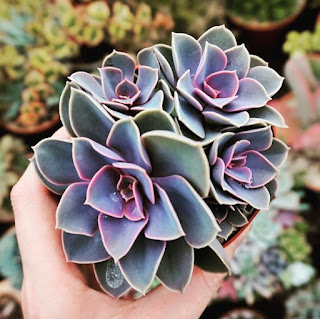A Guide to Growing Aeonium: Tips for Thriving Succulents
Aeoniums, with their striking rosettes and vibrant colors, have become increasingly popular in the world of succulent enthusiasts. Originating from the Canary Islands, these unique plants are known for their fascinating growth habits and ability to thrive in various climates. Whether you're a seasoned succulent collector or a beginner looking to add a touch of elegance to your garden, this guide will provide you with essential tips on growing and caring for aeoniums.
Understanding Aeoniums:
Aeoniums belong to the Crassulaceae family, and their unique appearance sets them apart from other succulents. These rosette-forming plants come in various shapes, sizes, and colors, ranging from deep purples and reds to light greens. Aeoniums are monocarpic, meaning they flower once and then die, but before doing so, they produce offsets or "pups," ensuring the continuation of the plant's lineage.
Choosing the Right Aeonium Variety:
There are numerous Aeonium species and cultivars available, each with its own distinct features. Some popular varieties include Aeonium Arboreum, Aeonium haworthii, and Aeonium 'Zwartkop.' Consider the climate in your region, as some varieties are more suited to specific conditions. Additionally, choose plants based on your aesthetic preferences and the overall design of your garden.
Optimal Growing Conditions:
Aeoniums are well-suited to a Mediterranean climate, thriving in mild temperatures with well-draining soil. Here are key factors to consider for optimal growth:
- Sunlight: Aeoniums prefer full to partial sunlight. In hot climates, provide some shade during the hottest part of the day to prevent sunburn. As a general rule, darker aeoniums can tolerate more sun than their variegated counterparts.
- Soil: Well-draining soil is crucial to prevent root rot. A cactus or succulent mix with added perlite or sand works well.
- Watering: Allow the soil to dry out between waterings. Overwatering can lead to root rot, so it's essential to find the right balance. You can use a moisture meter if you are unsure when to water.
Planting and Potting:
- Container Gardening: Aeoniums are well-suited to container gardening, making them adaptable to various environments. Ensure containers have drainage holes to prevent waterlogging. Terracotta pots are breathable so make a great choice. If you live in a country like Ireland that has cold, wet Winters growing in a pot is ideal so that you can move them under cover once Winter comes around.
- Planting Depth: When planting in the ground, ensure the crown of the plant is slightly above the soil level to prevent rot.
Propagation:
Aeoniums are easily propagated through offsets or stem cuttings. Gently remove offsets or cut a healthy stem, let it dry for a day or two, and then plant it in well-draining cactus soil. Keep the soil consistently moist until new roots develop. You can use a rooting hormone for a little extra boost if you like.
Pest Control and Maintenance:
Aeoniums are generally resistant to pests, but it's essential to monitor for common issues like aphids or mealybugs. Regularly inspect your plants and treat any infestations promptly.
Winter Care:
While some aeonium varieties are frost-tolerant, many are not. In colder climates, it's advisable to bring potted aeoniums indoors during winter or provide frost protection by covering them with a horticultural fleece.
Growing aeoniums can be a rewarding experience, adding a touch of elegance to your garden or indoor space. By understanding their unique needs and following these tips, you can cultivate healthy and vibrant aeoniums that will thrive for years to come. Whether you're a seasoned succulent enthusiast or a novice gardener, the allure of aeoniums is sure to captivate anyone who appreciates the beauty of these remarkable plants.

.png)






